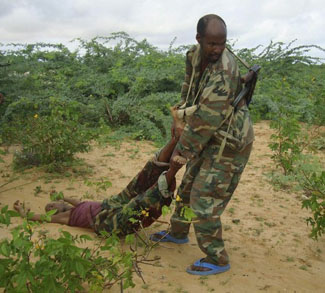On April 2, an individual named Shahrukh Saifi who was travelling on the Alappuzha-Kannur express train, doused his fellow passengers with petrol and set them ablaze, injuring eight of them. In the ensuing melee and chaos, three others including a child died. Their bodies were later found on the tracks while they were believed to be escaping by jumping from the burning coach. The perpetrator of this ghastly incident was arrested on April 5 at Maharashtra, where he was undergoing treatment for the injuries, sustained while attempting to jump off the train while fleeing. While the exact reason for this attack or the group behind this attack is still not known, it is believed as per some open source reports that it was a terrorist attack orchestrated by an Islamist terrorist group possibly inspired by the Islamic State. If the attack is indeed linked to the Islamic State as it has initially been made out to be, the incident could be significant for various reasons discussed below.
The seeds for this attack may have been sown as early as March 2023, when the Islamic State in its 23rd issue of Voice of Khorasan magazine carried a message entitled ‘A Message to the Inhabitants in the land occupied by Cow and Mice Worshipping Filth’ to its followers in South India, written by an individual with a kunya or nom de guerre Abu Yasir Al-Hindi (a person hailing from Hind in Hindustan). Al Hindi states that all pious Muslims should abandon Dar Al-Kufr (country ruled by non-Muslims) and perform Hijrah (religious migration). Al Hindi further commands: ‘For those who cannot make hijrah, make dar al-kufr your battleground. Put your trust in Allah, take a knife, and slice the Kafir’s throat, poison his food, burn their houses and greenery, turn their joy to sorrow and strike terror in their hearts with Allah’s help (sic).” By referring to India as Dar al-Kufr, the Islamic State has attempted to juxtapose its successful global binary template – Muslims Vs Kafirs (non-believers) – in India as well.
Notwithstanding the fact that there is still no evidence trail to suggest that the words above have actually resulted in such an attack, if it does come to be proven a consequence of the above call to arms, this will set a strong precedent for such attacks in the future by inspiring local modules.
Further, Al-Hindi ends the passage with a sermon on jihad, “Know that Jihad is an obligation on every Muslim whether he likes it or not!! (sic).” Using the concept of defensive jihad and fard al-ayn, meaning jihad becomes a legal obligation on every Muslim when Islam is threatened, Al-Hindi has attempted to strike at the emotions of the 200 million Muslims in India. While propagating the concepts of defensive jihad is not something new in the global context, it is rather a fresh idea being circulated by the Islamic State in India. Al-Hindi’s ideological predecessors, Abdullah Azzam, Anwar al-Awlaki, and Abu Musab al- Zarqawi of Al Qaeda and Zahran Hashim of the Islamic State from Sri Lanka have used this concept to deadly effect, inspiring terrorist attacks at various countries, including in India.
The current attack bears an eerie resemblance to the 2002 incendiary attack on a train near Godhra, Gujarat which killed 59 Hindu volunteers who were going for a temple construction work on a site where Babri Masjid stood. This event triggered a major communal riot in Gujarat which resulted in the death of over 1000 individuals. Another terrorist attack in 2017, a blast in Bhopal Ujjain train which was carried out by an Islamic State inspired module also appears to be similar. This was the first attack under the Islamic State banner in India which happened in the central Indian state of Madhya Pradesh. Around 10 persons were injured in the blast. However, the Islamic State never claimed responsibility for the blast, which indicates that this was orchestrated by a self-radicalized module. The only difference between Kerala attack and the earlier one in Madhya Pradesh is that the former is an incendiary attack compared to the latter which was a pipe bomb explosion. However, the attack in Kerala has resulted in death of three individuals, which is ostensibly the first known fatalities from an Islamic State attack outside the Jammu & Kashmir theatre.
As highlighted by the Geopolitical Monitor last week, South India has become the focus of the Islamic State and the state of Kerala appears to the core of their focus. Not surprisingly, Kerala is the common denominator in the recent attacks linked to the Islamic State. The perpetrators of the Coimbatore and Mangalore blasts visited Kerala in September 2022. And so did at least three members of the Islamic State module which were involved in the 2017 Bhopal Ujjain train bomb blast. Again, in the current incendiary attack case, this individual hailing from North India, conducting the attack in Kerala, possibly indicates a very strange coincidence.
The use of an incendiary device inside a moving train is much more lethal but less complex for individuals to plan and execute. The relative ease of attacks in terms of planning, financing and execution would be ideal for lone wolves. This may possibly appeal to individuals who may step forward to plan and carry out more such attacks in future. The fact that Islamic State has not claimed responsibility for this attack (through time of publishing) only goes on to prove that it appears to be carried out by an inspired module and not a one directly connected to the core. It would not be surprising if the Islamic State claims responsibility for this attack in Al Naba news or in its forthcoming issues of Voice of Khorasan as they did for the Coimbatore and Mangalore blasts earlier. From an individual’s perspective espousing Islamic State’s ideology and for one who might want to undertake the journey from a mere sympathizer to a loyal follower, it does not make any difference if these attacks are carried out by an Islamic State directed module or one without any links. What would appeal to the individual(s) would be only the brand and brand alone. In that sense, the Islamic State may stand to gain more from this purported attack, as more and more individuals are likely to gravitate toward it in India.
In the end, Islamic State will be pleased that its relentless campaign targeting India, albeit intermittently, is paying dividends which will further embolden the Islamic State core to mount more virulent propaganda in future. This may lead to a spiraling vicious cycle where propaganda would feed violence and violence in turn would feed further vitriolic propaganda. This attack for multiple reasons has hogged the limelight and has become the first of its kind in South India. If it is established that there are linkages to the Islamic State, then this would be the first attack perpetrated in South India by individuals inspired or affiliated to the Islamic State. And the first incendiary attack in South India. And finally, this will also be the first attack by Islamic State-affiliated individuals which is successful in terms of casualties in the whole of India. If indeed this attack is linked to the Islamic State, it will be a shot in the arm of the Islamic State in India, especially in South India.
The views expressed in this article belong to the authors alone and do not necessarily reflect those of Geopoliticalmonitor.com.




